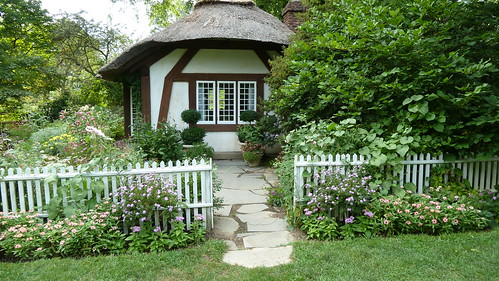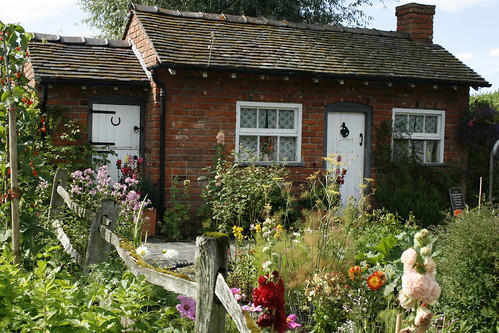How to Grow Basil
Although the Italians might have grew basil their own, they're comparatively recent adoptees. Oclmum bastlicum was originally a weedy plant of forest clearings, probably native to India, and its cuitivars are found in cuisines as disparate as Thai, south Indian, Greek and Mexican, in the cottage garden, like any annual from the wet tropics, basil favours moisture, warm soil and sun. other conditions either slow it down or kill It outright. Even in the Far North, basil will struggle outdoors in winter. Toensure a good supply of tender young leaves throughout summer and well into autumn, sow basil seeds indoors every three weeks, starting in early spring.
When you grow basil, don't plant them out until the soil has well and truly warmed up and any risk of frost has passed, in cool, damp conditions basil seedlings are prone to the fungal disease fusarium wilt and at all stages, basil can be plagued by slugs, snails and, to a lesser extent, aphids.
Since basil is a plant from the humid tropics, basil has no means of retaining moisture. When grow basil and if allowed to dry out it will droop pitifully, which often triggers panicked flowering. This leads to smaller, tougher leaves and yellowing as the plant directs all its resources into emergency seed production.
Flowering is inevitable in the long run, but pinch out buds for as long as possible to keep plants in active growth. The intensity of flavour in basil is affected by watering too - too much and the leaves will be lush
but insipid, too little and they'll be pungent but straggly.
Grow basil seeds need to be shaken from spent flower heads (the seeds turn brown/black when ripe) and saved for the following year, unlike fennel or rocket, basil , does not readily naturalise here because the seeds tend to rot in the soil overwinter.
Like all leaf crops, basil grow responds best to nitrogenous fertilisers. But not too much or too often - as with over-watering, excessive feeding in grow basil can compromise flavour. Diluted liquid blood and bone applied every other week is more than enough (any other soluble fertiliser should do the trick too).
Basil is often grow as a good companion plant for tomatoes. But in my experience basil and tomatoes form a fine partnership on the plate, not in the cittage kitchen garden. Both are fast-growing, hungry plants that
perform better apart, where they don't have to compete for food, water and light.
To grow the best basil for you
Since nearly all basils are simply cultivars of the same species, they all tend to grow as well as each other in most situations. Some are more prone to wilting, others are slower to flower, but they're essentially much of a muchness.
Aside from obvious difference in their physical form (colour, size of leaf), the real difference between cultivars comes down to flavour and scent, some are delicate and understated, others big and brash, with
plenty of subtlety and nuance in between.
Grow basil in pots
Basil is grow in pots great and is excellent container subject, but needs plenty of room to support its extensive, thirsty root system so don't skimp on container size. Terracotta containers are preferable to plastic
because they offer better protection to the plant's roots from overheating in summer. Grow basil plants with compost worked into the mix or used as mulch.
Although compact basils were specifically developed for pots and window boxes, all cultivars can be grown
in pot and containers, including the near shrub-like perennial holy basil.
Variety basil guide
Compact basil
Compact basils don't look like the basil of one's mind's eye but they're the most potent by far. Gillian Hurley-Gordon of Italian seeds Pronto says Italian gardeners and cooks prefer smaller basils, especially for pesto. "The smaller the leaves, the higher the concentration of cnlorophyll and the greater the depth of flavour, especially at the height of summer when the oils almost seep from the leaves," she says.
In Greece, compact basil varieties have been grown in window-boxes within easy reach of the kitchen for hundreds of years. Although this has the obvious benefit of convenience, the habit also had its origins in a widespread fear of unruly spirits, saucy vampires and witches of loose morals, none of whom were keen on breaking and entering through a thicket of supposedly God-imbued basil.
1 'Spicy Globe'
Gerard Martin of Kings Seeds and I share an abiding love for this true miniature basil. It's slow to bolt, powerfully fragrant and perfectly pompom-esque. Ultra-cute grow in a window box too.
2'Greek Mini'
More upright than 'Spicy Globe' and with slightly larger leaves, but similarly well endowed with flavour and fragrance, ks
3'FinoVerde'
The basil of choice for Italian pesto makers, who rate it very aromatic.Featuring miniature leaves on a full-sized plant. 'Fino Verde' is highly productive and perfect for those craving a no-holds-barred assault on the senses. KS
Lettuce leaf basil
The lettuce leaf basils are often described as insipid, but this misses the point entirely. Yes, they're often milder than other basils, but they're intended for use in salads, where subtlety is key. Grow them in sheltered positions to avoid wind burn.
4 'Foglie di Lattuga'
A favourite of NZ Gardener editor Jo McCarroH, this Italian heritage variety is reputably the basil for making the classic insalata caprese (tomato, basil and buffalo mozzareiia salad). The huge, tender leaves
also work frighteningly well in sourdough sandwiches filled with provoione dolce cheese and prosciutto. ISP
5 'Genovese Giant'
similar proportions to 'Foglie di Lattuga', but with a gutsier flavour and less crinkling to the leaves, ks
Sweet/Genovese basil
People from Genoa are a litigious and sensitive lot when it comes to the good name of their city being thrown about, particularly in reference to basil or pesto. under EU law it's illegal to call any basil Genovese unless it has been grown in a certain region of Liguria. But Gillian Hurley- Gordon of Italian Seeds Pronto is not sure
that law is being adhered to. "The output from that one region is small," she says.
"It can't possibly be supplying all the seed companies around the globe offering so-called Genovese basil." In other words, don't take the word Genovese too literally.
6 'Sweet Genovese'
Probably the most widely grown Italian- style basil in the world, if it's reliable, generic basil you're after, this may well be the one for you. KS
7 'Bolloso Napoletano'
The definitive pizza basil, originating in Naples well over 100 years ago (roughly coinciding with the invention
of the Margherita pizza). The slightly blistered leaves (described by Gillian as "iPhone-sized") are richly scented, with a distinctive edge of anise. ISP
Purple basil
I don't mind telling you that I'm not a big fan of the purple basils. I find them pretty enough but so often lacking in flavour, and what's more they're prone to turning black when cooked. However Gerard Martin at
Kings Seeds tells me they're among his top sellers, so who am I to judge?

8 'Violetto Aromatico'
Bred specifically to please purple basil-haters like me, this variety sports the most fetching violet leaves and a none too shabby basil flavour to boot.
9'DarkOpal'
A top seller worldwide and certainly very showy, this basil adds colour and interest to summer salads. It's very popular with microgreen growers too. And it can look great as a border in the salad garden. KS
Southeast Asian basil
The various basils of Southeast Asia are characteristically spicy with strong liquorice notes. As a group they hold their own against the onslaughts of ginger, chilli and fish sauces typical of these regions. Contrary to European traditions, Southeast Asian cooks often use immature basil flowers as well as leaves.
10 'Thai Siam Queen'
Although often eclipsed by kaffir lime, basil is one of the most important herbs in Thai cuisine. With a hot, liquorice/anise flavour and room-filling fragrance, 'Thai Siam Queen' is the only cultivar I'll allow near my favourite roast duck curry. KS
11 'Mrs Burns Lemon'
Officially Mexican in origin, the lemon basils (there are quite a few) are probably descended from the Southeast Asian basils. 'Mrs Burns' packs an authentic citrus fragrance and, with its tender leaves, is a real boon for salad lovers. More recently, lemon basil has found a place in esoteric desserts, a la Kiwi chef Michael Meredith and friends. KS
11 'Mrs Burns Lemon'
Officially Mexican in origin, the lemon basils (there are quite a few) are probably descended from the Southeast Asian basils. 'Mrs Burns' packs an authentic citrus fragrance and, with its tender leaves, is a real boon for salad lovers. More recently, lemon basil has found a place in esoteric desserts, a la Kiwi chef Michael Meredith and friends. KS
12 'Sacred'
Although quite different to sweet basil, holy basil (Ocimum sanctum), sold under the name 'Sacred', is an interesting herb used widely in Southeast Asia and India. The hairy leaves are ideal in salty/sweet stir-fried dishes and rich soups. 'Sacred' is a frost-tender perennial, but it becomes rather straggly after a couple of years. The long spikes of its pink flowers attract bees and other beneficial insects. KS





















































